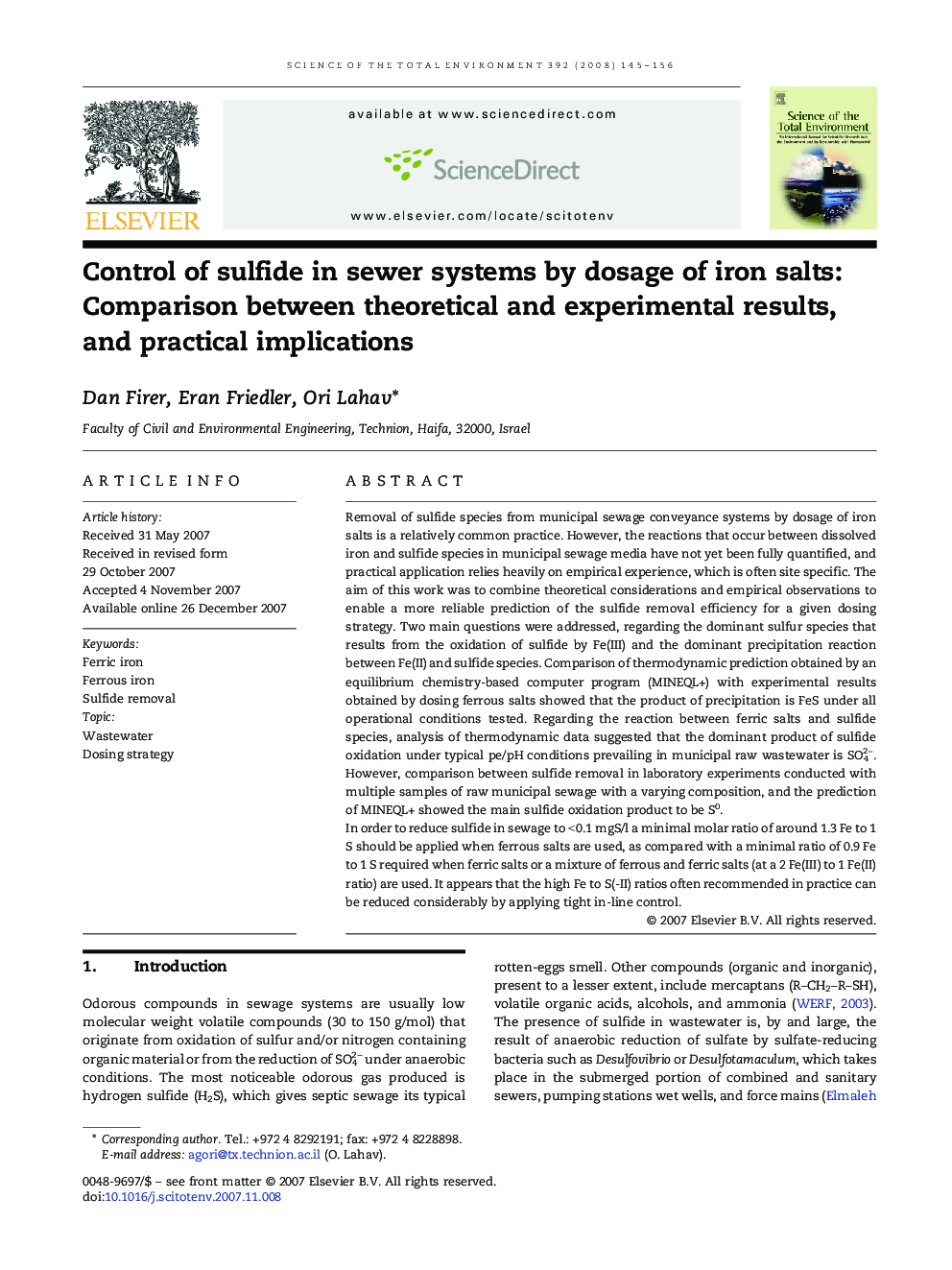| کد مقاله | کد نشریه | سال انتشار | مقاله انگلیسی | نسخه تمام متن |
|---|---|---|---|---|
| 4433144 | 1619932 | 2008 | 12 صفحه PDF | دانلود رایگان |

Removal of sulfide species from municipal sewage conveyance systems by dosage of iron salts is a relatively common practice. However, the reactions that occur between dissolved iron and sulfide species in municipal sewage media have not yet been fully quantified, and practical application relies heavily on empirical experience, which is often site specific. The aim of this work was to combine theoretical considerations and empirical observations to enable a more reliable prediction of the sulfide removal efficiency for a given dosing strategy. Two main questions were addressed, regarding the dominant sulfur species that results from the oxidation of sulfide by Fe(III) and the dominant precipitation reaction between Fe(II) and sulfide species. Comparison of thermodynamic prediction obtained by an equilibrium chemistry-based computer program (MINEQL+) with experimental results obtained by dosing ferrous salts showed that the product of precipitation is FeS under all operational conditions tested. Regarding the reaction between ferric salts and sulfide species, analysis of thermodynamic data suggested that the dominant product of sulfide oxidation under typical pe/pH conditions prevailing in municipal raw wastewater is SO42−. However, comparison between sulfide removal in laboratory experiments conducted with multiple samples of raw municipal sewage with a varying composition, and the prediction of MINEQL+ showed the main sulfide oxidation product to be S0.In order to reduce sulfide in sewage to < 0.1 mgS/l a minimal molar ratio of around 1.3 Fe to 1 S should be applied when ferrous salts are used, as compared with a minimal ratio of 0.9 Fe to 1 S required when ferric salts or a mixture of ferrous and ferric salts (at a 2 Fe(III) to 1 Fe(II) ratio) are used. It appears that the high Fe to S(-II) ratios often recommended in practice can be reduced considerably by applying tight in-line control.
Journal: Science of The Total Environment - Volume 392, Issue 1, 15 March 2008, Pages 145–156